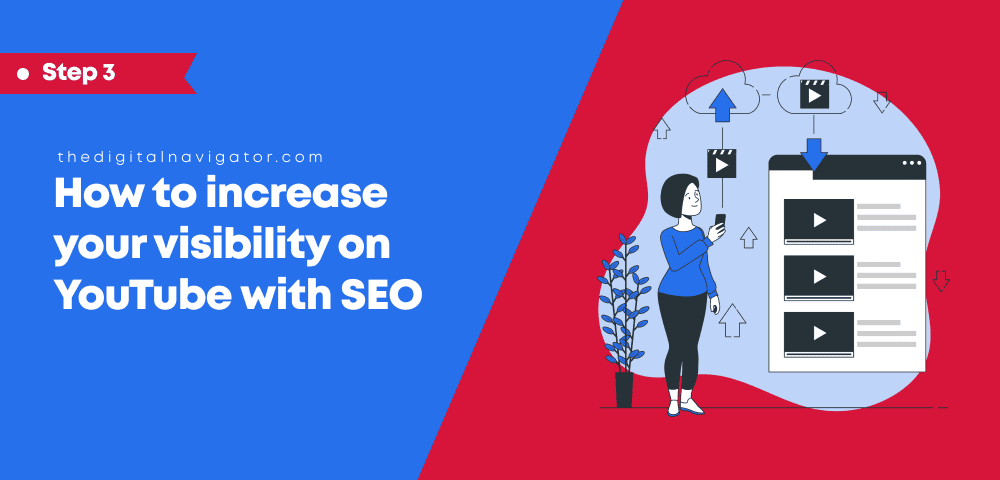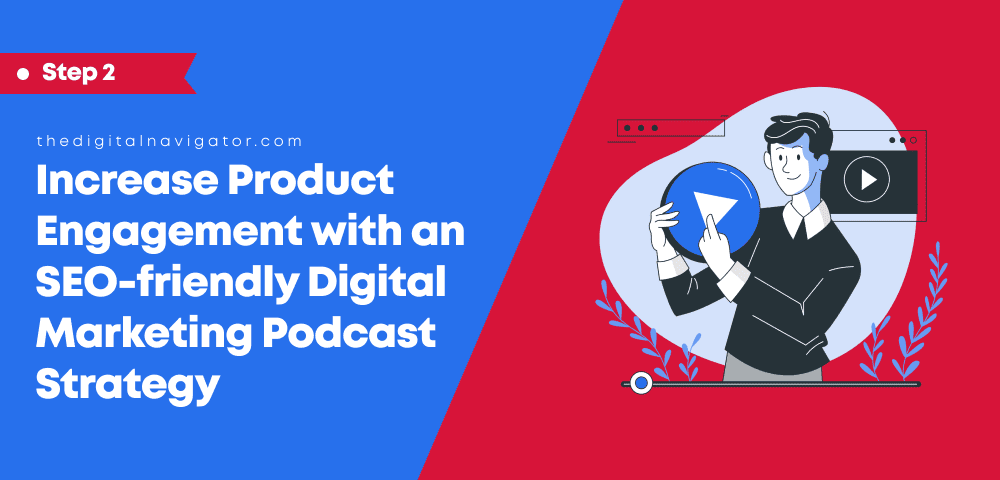How to create unique content for your website | Why unique content is important
Published Date: |
Updated Date:
Discover the best content tactics to avoid repetitive content your readers have seen before, and learn the real reasons why unique content is important!
This article is Part 2 of 3 in our Expert Guide to Drive Sales with Content Marketing in 3 Steps

Table Of Content
- Introduction
- 4 Key Steps to Re-Engage Your Customer Base and Improve Customer Loyalty
- Step 1: Incorporate Customer Feedback
- What feedback tools can I use?
- Step 2: Create Innovative Campaigns
- Step 3: Upgrade Website Design
- Step 4. Cultivate Authentic Communication
- Taking a multi-faceted approach to customer engagement
Still having trouble figuring out what kind of content you should write? Here is how to create unique content for your website, so that your competitors don’t know what hit them!
How to create unique content for your website | Unique content for SEO
When we approach content creation for ourselves, or any of our clients, we use this solid 6-step approach to make sure we’re creating content that is consistent, unique, and which will ultimately build the brand awareness we’re looking for–all while responding to the needs of potential SEO leads.
This is to ensure our clients understand how to create website content that brings infinite returns, and ultimately increases your overall marketing ROI.
6 Steps to Create Unique Website Content | Unique Content Writing
- Brainstorm unique blog ideas that will solve problems. If you can write about what you’re customers need, and then connect that to your services, you’ve hit content gold! Once you’ve brainstormed some great ideas based on products, business, and potential search terms, then you can write about that content without focusing so much on SEO–since your content is bound to be useful regardless. Only afterward will you need to run through and optimize for key search terms.
- Check competitor pages, topics, and search terms. When you look at the top-ranking pages, topics, and search terms of your competitors (we recommend using a tool like Ahrefs or SEMrush), you can pay a little bit of cash to get big hints on what your competitors are writing about, and where you can fill in the cracks with trustworthy, authoritative content.
- Review the most popular content on your website. Use private analytics or Google analytics to check out which pieces of content perform best already, and create content that is closely related. That way you can even go into the well-performing article to add internal links to your latest, related content.
- Use Ahrefs to find related search terms. Start typing in different search terms related to your business – or even the search terms that your website already performs well for – and see what other keywords you can begin using to inspire new and sought-after content in your niche.
- Use hot-topic themes from email blasts. If you notice one of your emails got a lot of clicks, check out the headline and body content, and see if you can’t create other content pieces related to that original theme.
- Review your most popular social posts and videos. More views equals more interest, and more likes can lead to better conversions. Use social posts and videos to figure out what your audience already likes, and make more content they’ll love
How to measure the success of your online marketing strategy and content
When conducting online marketing strategies such as content marketing and website content development, it is important to measure its success. If you don’t have a metric to know when your content is working (or when its not), you’re actually wasting time and money on your content marketing.
Measuring the success of your online marketing strategy therefore shows you how well your campaigns are tracked towards Key Performance Indicators (KPIs). These are an important element of any campaign, as KPIs give a better picture of whether your content marketing strategy is a success or not.
KPIs also help businesses understand how their campaigns connect with their business goals. It ultimately allows them to make decisions about optimizing their campaigns and marketing channels.
Furthermore, these metrics can also tell businesses how to improve sales and how to increase revenue any time they are performing poorly. When you have been measuring engagement, you will know when it drops, and can return to creating content that saw a spike in your conversions.
We use some fairly basic rules to measure the success of our own content at The Digital Navigator, and we think you’ll be able to use them for your own online marketing strategies: (1) identify your KPIs, (2) measure ROI, (3) set achievable benchmarks, (4) track conversions, and (5) track engagement.
-
1. Identify your KPIs
Key Performance Indicators (KPIs) for blog posts and articles could refer to website traffic, page views, or bounce rate. Meanwhile, a KPI for emails would be open rate, conversion rate, and subscribers. It is all about making your KPI measurable and being able to show you the results of your online marketing strategy.
-
2. Measure ROI
There are different ROI factors to consider for every content marketing strategy, such as leads, sales, and revenue. If a sales focus and revenue are your main concern, you need to track and log a customer’s journey to purchase.
Whereas, if your focus is on social media engagement, you may want to track the conversions there to prove your content marketing ROI. At this point, we actually recommend that your developer add specific tags or custom field data in their email marketing/contact tools.
For example, we like to update GravityForms so it tracks the sources of our leads based on the campaigns we run. Later on, when we get a purchase, we are quickly able to see which purchases came from which campaign.
-
3. Set achievable benchmarks
Content marketing benchmarks not only show you how well you are performing but also help you see changes in metrics like subscribers, sales, and social mentions through either private or Google analytics.
This allows you to improve or set different strategies based on the number of leads, or your competitors. Just keep in mind that you can use data from previous campaigns as a starting point–but if you don’t have this data, it’s time to start collecting it to best measure the impact of your campaigns, and any changes you’ve made.
Accurate data is incredibly important, so we recommend taking a second to check out our article about web analytics tool and how to maximize in order to increase customer acquisitions.
-
4. Track conversions
Conversions are another clue to brand awareness, authority, and customer attitudes. They rely on those established benchmarks, whereby measures are taken about the percentages of these conversions, and whether they increase or decrease.
But how do you track those conversion rates? Normally, you would divide the total number of captured leads by the total number of visitors on a page. When you’re looking at sales conversions though, you’ll divide the total number of sales by the total number of page visitors, or leads in a given sales campaign.
-
5. Track engagement
Unlike conversions, engagement is an important solution to explore unquantifiable attitudes towards your business. It allows you to track comments, likes, and shares and also data about your reputation online, and what kind of shares and comments you are getting.
To measure engagement, use analytics tools to measure visitor engagement metrics like average page time, open rates, bounce rates, and click percentages.
Successful Content Marketing | How to Improve Sales Process with Amazing Content
Content marketing is not only an online marketing strategy that drives sales; it also increases the volume of traffic to your website. If your content marketing strategy is organized and executed properly, it will convert your users into leads and then ultimately into sales.
As we’ve discussed, the most effective way to drive traffic to your website is through content marketing by developing blogs, social media campaigns, and videos. All of these things are created to increase engagement, and to contribute to product sales.
The more users there are who engage with your website, the more customers will develop trust in your brand, eventually becoming a prospect and client. Such investigations leave you with a clear sales focus for your content marketing, and unlimited opportunities to increase sales.
Before we close this article, here are a few more content marketing tips we think will help you take your next content campaign over the finish line:
- Increase the length and frequency of publishing: generally, long-form content has been the most effective, as it outperforms short form content by 40.54%. However, the effective length for your content will be dependent on the goals of your business. We normally say 1000 words is a great minimum, but aiming for about 2000 is perfect. Important competitive topics can aim for 4000+ words, but make sure to start adding a table of contents for anything above 2500 words.
- Include different types of content formats: Note that longer form content formats like case studies, press releases, e-books, blogs, videos, webinars, and infographics are just a few examples where a table of contents becomes really useful as an SEO tool as well. You can even link or share particular headings for repeatable use through social media, especially if the topic relates more to something in the middle of your post as opposed to the beginning.
- Carefully Curate Content Distribution Channels and Promotion: the type of channel and promotion you use for your online marketing strategies plays a major role in how your content is being viewed, as it reaches different types of audiences using these channels. We recommend looking at channels under two main categories: social media organic traffic, and SEO vs. Paid advertising traffic, while others will consider internal channels like email, signatures, and other communications. Like with a great menu though, you always want to perfect one channel before moving onto another.
Create the best content for your brand | Why Unique Content so Important in SEO
At the end of the day, great online marketing strategies are there to help you AND your users have the best possible experience of your website.
Organized and successful content marketing is a measurable way to increase sales. It’s a way to help everyone online discover who you are, where you come from, and what you can do for them through your products and services.
Basically, content marketing is a function of your website that continues to teach you how to improve sales, since each piece is centered on client interactions and SEO keyword results. When you employ content marketing strategy correctly, you can come out with content that may very well become a product all on its own in the future!
Actually, we love when business owners look ahead to strategize about content, and about website performance. That’s where we often come in for clients–to assess where they are now, and how they can get better content that actually serves their customers, and that becomes popular online.
We take content strategy pretty seriously in fact, even delivering full marketing makeovers to clients across every industry.
So, whether you choose to hype your content on your own, or decide to go with an agency, just know we can always get the ball rolling and deliver website assessments and more during your journey to increasing sales through content marketing!
Good luck!
This article is Part 2 of 3 in our Expert Guide to Drive Sales with Content Marketing in 3 Steps. Missed out on the basics? Go back and read Part 1: What is content marketing?, or skip ahead to Part 3: How do you increase sales with content marketing? for more great content tips!








0 Comments